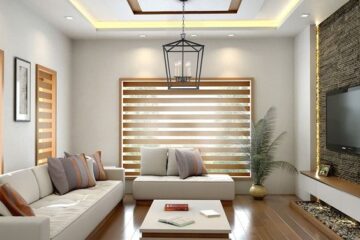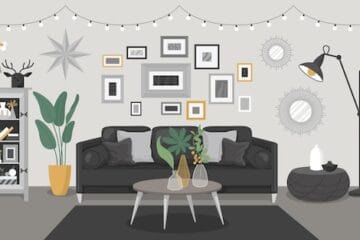
Need some design inspiration to motivate your decor weight loss? Visit tidg.ca to see Yanic’s latest project photos and more. Find him on Twitter and Instagram @yanicsimard.
Designers will tell you — knowing what to edit out of your decor is just as important as knowing what to add in.
However, this skill is even trickier than it sounds, especially when your home is filled with sentimental pieces — and lots of good intentions. (Hello treadmill/laundry-rack!)
Here are my top tips to help you make tough decisions about what stays, and what makes room for good design.
Know your limits
Sometimes you need to start with absolute limits! For example, when trimming back your collection of photos, consider how many frames you would display if sentimental feelings weren’t a factor.
Then choose strictly that number of your very favourite pics, keeping the rest flat in a box until they rotate in. Starting with a limit lets you know how much you really need to cut.
Art and photos tend to be the number one way many people overfill their space. Remember that some patches of wall can be left empty, revealing a beautiful wall colour and giving the eye visual breaks. Create one or two feature displays, and let the rest of the room breathe.
Time will tell
The standard rule for clothing is that if you haven’t worn it in a year, you should let it go; this rule can be applied to home decor and kitchen gadgets just the same.
To allow for seasonal items, feel free to stretch this time to a full year — but set a limit somewhere so you aren’t holding on to unused food processors and decorative trinkets in the backs of cupboards for decades.
The same rule is helpful for well-intentioned items like piled up books or gym equipment. If you haven’t used it, be realistic with yourself and reclaim your space — after all, square footage is expensive!
You can always go for a good jog when you’re back in the mood for some self improvement.
Don’t add, upgrade
Rather than compulsively adding new pieces over time, try upgrading instead. For example, when you happen upon a new eye-catching trinket, rather than simply adding it to a shelf, swap it out for an existing piece. This keeps shelves from overloading and makes you question whether you really need each impulse purchase. Ask “is this item nicer than something I already have?”.
Layered lighting is important, but often it is better to replace dim fixtures instead of simply adding more.
Use three to five significant light sources, rather than nearly a dozen weak table lamps and LED baubles.
Try replacing a flimsy floor lamp you bought in college with a multiple-bulb fixture, with a dimmer so you can go from bright to mood-light.
Pass it on
Some items will be better suited to another room — or sometimes another house. If a beloved piece isn’t truly working with your decor (you’ll know deep down), give it a good home with friends, family, or a charity.
In the end, your loved ones may not want that old dusty table lamp any more than you do, but at least you won’t have to see it be thrown away!
Sometimes bringing in a friend can really help make difficult decor cuts. Find a friend with a clean, organized style you admire and let them be the ‘bad cop’ when it comes to tough decisions — just be willing to take their advice when the time comes.
[Source:- Toronto Sun]


